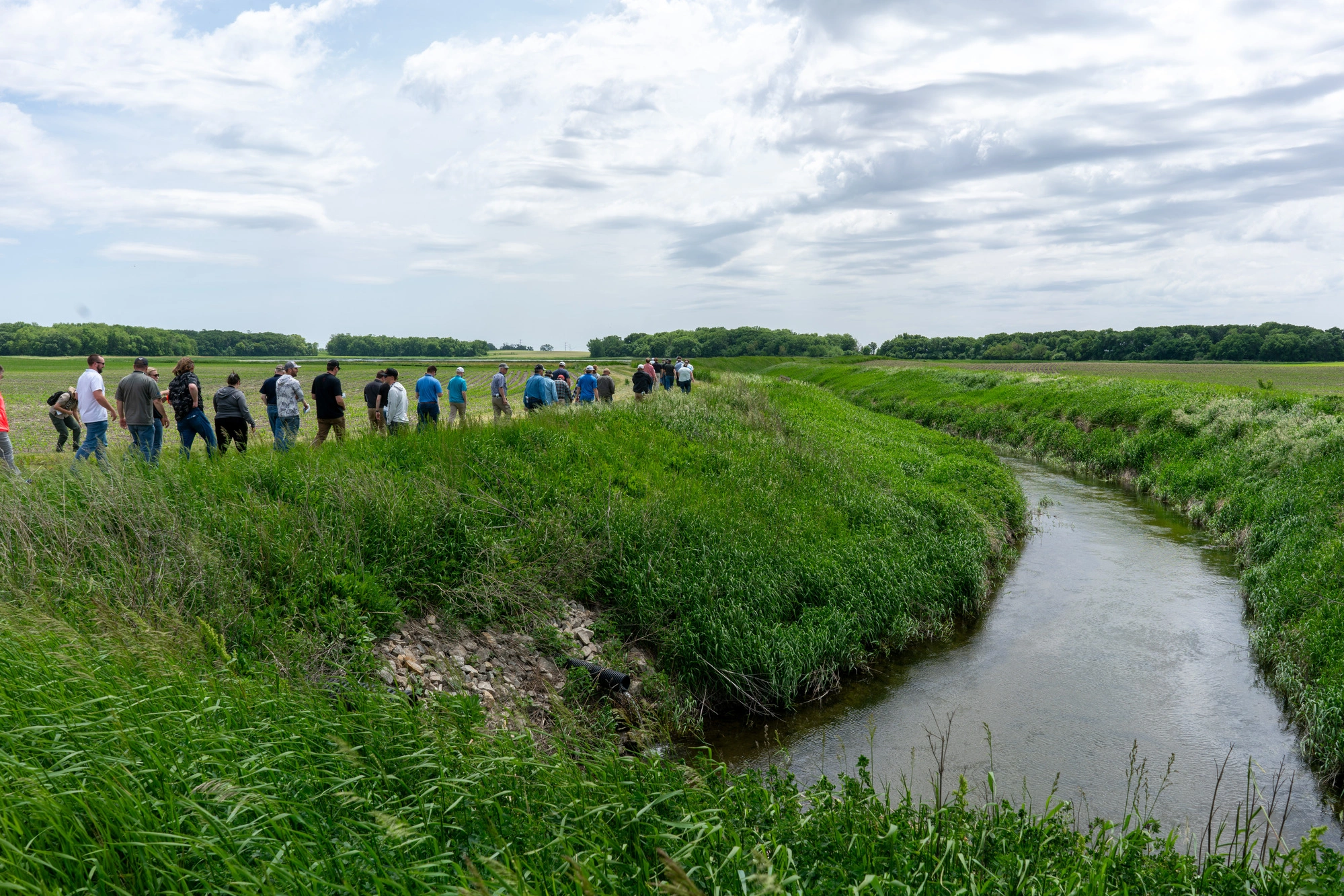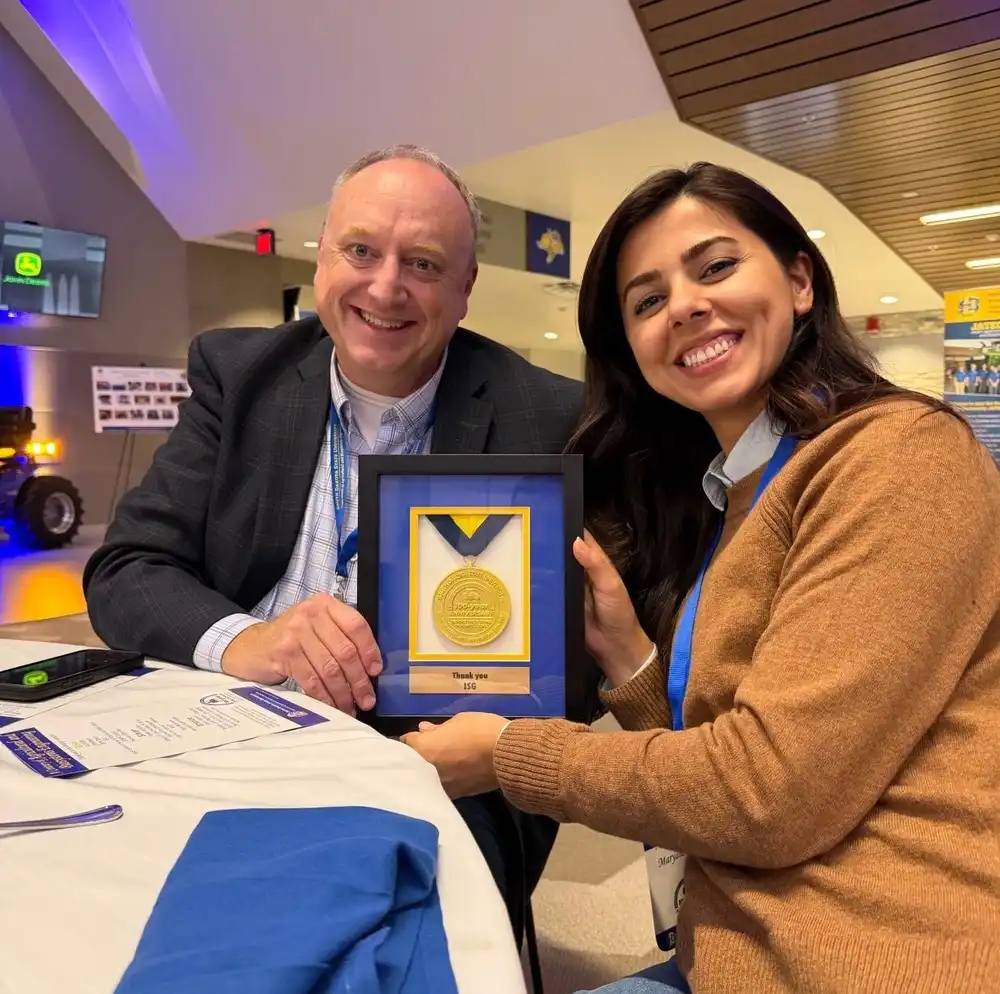Shared Waters, Shared Solutions: A Unified Approach to Stormwater in the City of Early, Iowa
When the City of Early reached out to ISG, they struggled with repeated failures in their stormwater system—challenges that weren’t confined to City limits. Drainage District No. 59, which serves both the City and the surrounding areas of Sac County, had become a critical point of concern. The drainage district’s main tile had partially collapsed in several locations, surface drainage was deteriorating, and the outlet ditch was overgrown and ineffective. As a result, flooding became a persistent issue during heavy rain events, impacting Early’s residents and the surrounding agricultural land that relies on this infrastructure.
Like many communities across the Midwest, Early and Sac County faced the consequences of aging infrastructure systems that weren’t built for the volume or intensity of today’s storm events. Increased development and shifting weather patterns pushed jurisdictions to their financial and operational limits. Recognizing the situation’s broad impact and complexity, a siloed fix wouldn’t be enough. Drawing from ISG’s experience, we facilitated a collaborative solution that brought the City and County together—aligning goals, pooling resources, and creating a more resilient, regional approach to stormwater management.
Erasing Jurisdiction Lines
From the beginning, it was clear this wasn’t just a City issue. The drainage tile system runs directly through Early but also supports rural farmland throughout the county. Flooded basements and roadways in town mirrored extended field saturation just outside it, emphasizing the need for a unified solution.
With experience in water resource engineering and navigating cross-jurisdictional infrastructure challenges, ISG helped bring the City and County together to frame this as a shared problem. We facilitated the development of a 28E agreement, Iowa’s legal tool for intergovernmental collaboration, to formally align stakeholders and broaden funding eligibility.
By guiding the City through this process and navigating the partnership with Region 12 Council of Governments, we helped secure critical funding through a Community Development Block Grant (CDBG) that covered 41% of the project cost. This reduced residential burden and made the improvements possible without relying solely on local drainage assessments or tax increases.
Designing Resilience
With funding and partnerships in place, ISG designed a long-term, system-wide solution rooted in the principles of water management systems and water resources engineering. Our engineers analyzed the full stormwater network—not just the most visible failures—to understand how water moved across the urban and rural landscape.
After evaluating several approaches for water quality improvement and flood mitigation, we proposed a dry detention basin at the north end of town. This location was key—by intercepting runoff before it entered the City, the basin significantly reduced pressure on existing infrastructure during heavy storms. The basin also improves water quality by allowing sediment and pollutants to settle out before the water continues downstream.
More than just a fix, the basin is a future-focused strategy. Built on land acquired through the CDBG grant, it protects homes and public infrastructure today, while also preserving open space for expansion of stormwater needs tomorrow without impacting private properties.
The design also addressed several critical infrastructure needs. ISG developed plans to clean and stabilize the surface drainage channel, ensuring more efficient and durable flow paths. We also replaced the main tile system, a necessary upgrade that provided an opportunity to address a long-failing culvert at 2nd Street. This culvert was replaced with a new, durable aluminum box culvert designed to handle increased flow and reduce long-term maintenance. Finally, we coordinated replacement of the deteriorating street, curb, and gutters along 2nd Street, creating a cohesive and resilient improvement that ties together surface and subsurface drainage elements.
Together, these upgrades form a forward-looking, integrated solution that improves stormwater management, enhances community resilience, and sets the stage for sustainable growth.
More Than a Project—A Model for Collaboration
What began as a simple tile repair evolved into a cost-effective, community-wide investment in resilience. By guiding Early and Sac County through a shared process and applying our expertise in multi-jurisdictional infrastructure, ISG helped transform a fractured system into a sustainable solution.
This project shows the tangible benefits of collaboration between rural and urban communities. By aligning resources, expertise, and strategic partnerships, the City and
County have addressed a complex water challenge with solutions designed for long-term impact.





Related Articles

.webp)
ISG Recognized as a 2025–26 Emerging Professional Friendly Firm for the Fourth Consecutive Cycle
ISG has been honored as a 2025–26 Emerging Professional Friendly Firm by AIA chapters in North Dakota, South Dakota, Wisconsin, and Minnesota in recognition of its commitment to fair compensation, licensure support, mentorship, and growth for early-career architects.

.webp)
Capturing Value From Every Drop: Reflecting On The Drainage Water Recycling Economic Analysis Report
Explore how ISG’s economic analysis of drainage-water recycling reveals the value in every drop, from yield gains and cost savings for producers to nitrogen reduction benefits for downstream communities.










